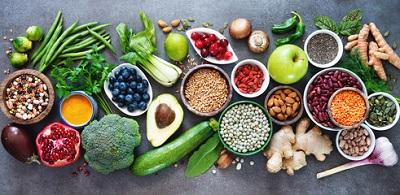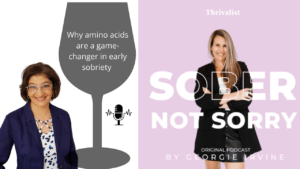The Lowdown on Diets
by Vanita Dahia
Are we facing an up-hill battle with global obesity?
Which diet is right for you?
How to decipher the right healthy diet?
The World Health Organisation (WHO) have reported that:
- Worldwide obesity has nearly tripled since 1975
- Over 650 million people are obese worldwide
- 39% of adults aged 18 years and over were overweight in 2016, and 13% were obese
- Most of the world\’s population live in countries where overweight and obesity kills more people than underweight
- 39 million children under the age of 5 were overweight or obese in 2020
- Over 340 million children and adolescents aged 5-19 were overweight or obese
- Obesity is preventable
“Eat food. Not too much. Mostly plants”
Michael Pollan
Since we are what we eat, diet plays a critical and crucial role in health.
After all, we make our happy and sad brain chemicals from specific protein sources ( amino acids) and green vegetables ( provider of Methyl donors).
The art of gastronomy is a universal experience. We connect with family, friends and conduct business around food – food is the common ground.
The plethora of diets on the marketplace is confusing. There is no one diet best suited for all.
“We are what we eat” should be the mainstay of optimal health. There are a plethora of the “ideal” diet either based on weight loss regimes, health condition, blood type, or genotype which in turn confuses the patient in structuring the ideal diet for themselves.
Research has shown that professionally-managed, structured diet programs that consist of dietary, lifestyle and exercise guidelines, plus regular updates with improvement are more successful in supporting weight and wellbeing.(1)
Protein Reduces Hunger Pains
Improve satiety (feeling of fullness) with a low-glycaemic-index carbohydrate, protein-rich diet. Different types of protein including whey, soy and gluten proteins have all been found to produce reductions in food intake for up to three hours following their ingestion by increasing the satiety hormones cholecystokinin (CCK) and glucagon-like peptide-1 (GLP-1). Protein also suppresses the release of ghrelin, a hormone that the stimulates appetite.
Ensure that digestion is optimal. More and more people are now taking proton pump inhibitors (PPI’s) for indigestion and inadvertently suffer with hypochlorhydria or depletion of digestive enzymes.
Digestion rates for different forms of protein vary, altering their ability to promote satiety and subsequent availability of amino acids, via the blood stream, to be incorporated into muscle tissue.
Whey protein is considered to be a “fast” protein, due to its soluble nature, and is rapidly emptied from the stomach whereas soy protein is an intermediate protein due to its slower rate of digestion. Each protein source will contain a different proportion of amino acids. For example, whey particularly high in the branched chain amino-acid leucine needed for building muscles, whilst soy contains high levels of glutamine and arginine.
Glutamine is needed for gastrointestinal immune integrity and arginine support the cardiovascular system by its nitric oxide producing ability, thereby supporting health blood pressure.
Plateau of Weight Loss
Isn’t it frustrating when your weight loss grinds to a halt despite following all the right dieting principles? It’s so easy to be disheartened during this precarious time and switch to the old habits.
One reason for plateauing weight reduction and decreased energy is the liberation of stored persistent organic pollutants (POPs). POPs damage the mitochondria and has detrimental effects on mitochondrial metabolic rate and thyroid function. Liver cleansing herbs such as milk thistle and specific liver detoxification amino acids can assist in elimination of potentially harmful toxins that may be released from adipose tissue.
Vanita’s Golden Rule on Diets
Keep it simple!
Stick with foods your grandparents ate, foods you are genetically attuned to adapt!
Replace one meal per day with a high protein, low carbohydrate meal.
Consume a palm sized portion of protein and three handfuls of allowable vegetables, 2 to 3 pieces of fruit daily and Include healthy oils as a part of the diet.
Bullet proof coffee once daily if you love your morning coffee. Blend oil and cream into your morning coffee for an energy boost
Exercise regularly – aiming for 40 minutes of moderate intensity exercise, four times a week.
As a golden rule, aim at 90% of your daily diet consisting of:
• 2 to 3 pieces of fruit. Avoids fruit juices, reconstituted drinks
• A large pile of vegetables, either baked, juiced, stir-fried, cooked, steamed
• Include pulses, lentils, sprouts, fermented foods
• 3 tablespoonsful of oil like olive, flax, coconut, avocado, nut oils, hemp seed. Use liberally with foods. For example, sprinkle some olive oil over a pasta or pizza dish or coconut oil in a rice dish.
• 2 litres of water. This may incorporate teas and coffees
• Protein, palm sized portion in the form of chicken, fish, or meat. If vegetarian, use tofu, lentils, pulses or beans.
Take into account your specific food allergies and intolerance’s.
“Let food be thy medicine and medicine be thy food”
Hippocrates
Deciphering Diet Choices
The truth is diet plays many roles and can affect many organ systems. Food:
- keeps us alive
- causes weight gain and eating disorders
- creates urges or cravings for certain types of foods
- turns appetite regulatory hormones on and off
- regulates hormones, thyroid and modulate fatigue
- makes neurotransmitters and lift mood
- rescues exhausted adrenals
- regulates blood sugars
Feed your Genes
Your DNA contains information that determines the characteristics that are with you at birth. These include hair and eye colour, and other characteristics such as how you process nutrients. This genetic information affects you from the inside.
Diet Choices
It’s best to choose foods that stimulate gut hormones to provide a feeling of fullness for a longer period. These are foods that are high in protein, such as fish and chicken, and low in glycaemic index (GI) such as pasta, lentils and basmati rice.
Have you ever tried growing your tomatoes as big and uniform as is found in supermarkets? The tomatoes that are home grown may be smaller, may even be pitted and not uniform, would generally tend to be nutrient dense and healthier than the commercial counterpart. Food today is either adulterated, or genetically modified.
Genetically modified soy or corn is used in daily diets across the world masked in foods such as bread, chocolates, potato chips, fried foods, oils, margarines, mayonnaise, and many more. Agricultural industries are using gene technology to improve the efficiency of animal production. This research uses the natural genetic variation in livestock to selectively breed animals that produce more meat, milk, and fibre.
Awareness of modification, adulteration and agricultural processes of food should proactively give us the opportunity to make informed healthy organic choices.
The harsh truth of obesity is that it is associated with numerous disorders and diseases. The staggering statistics of obesity-related conditions include 80% of Type 2 Diabetics, 70% of cardiovascular disease cases, and 42% of breast and colon cancer cases can be directly attributed to obesity.
External factors such as diet, toxicants, pollutants or stimulants such as smoking can interact with genes to increase the likelihood of developing allergies and subsequent diseases.
A diet not suited to you can contribute to many symptoms such as:
- fatigue
- cravings
- depression, mood swings
- muscle aches
- nasal congestion
- water retention
- candida infections
- headaches and insomnia
- indigestion, leaky gut or bloating
- skin rashes
- dark circles under the eyes
Globesity is causing many to climb an up-hill battle, but know there are effective tools and nutritional or herbal medicine to make the climb less challenging.
Types of Diets
Diets can be structured based on a fad, weight management, or health conditions. Novel innovations incorporating genetic profiling may be tailored for you.
Classes of diets can include but not limited to:
• promotional and commercial programs like “Jenny Craig”, “light and easy”
• Fad diets such as the lemon detox, grapefruit
• Intolerance-based diets for example, lactose free diet, fructose free diets, amine free or salicylate free diet, FODMAP diet, GAPS diet
• Disease specific diets like inflammation diet, diabetes diet, stress busting diet, candida diet, SIBO
• Popular and current diets are 5:2 diet, intermittent fasting, ketogenic
Take away the confusion! See list of Types of Diets






